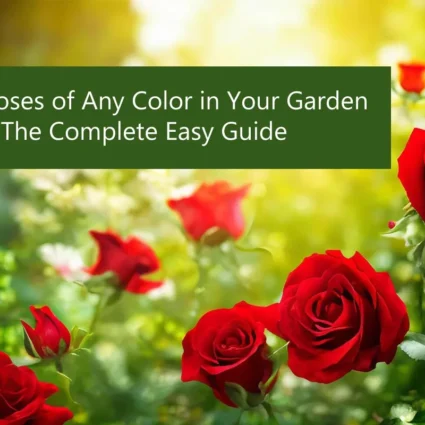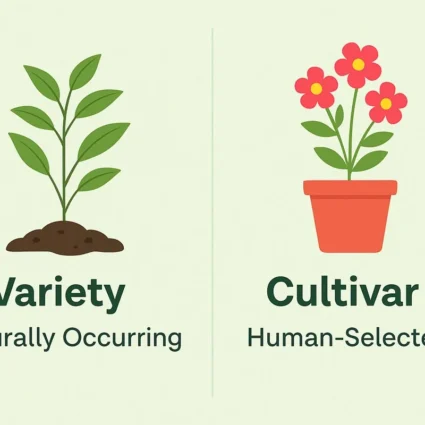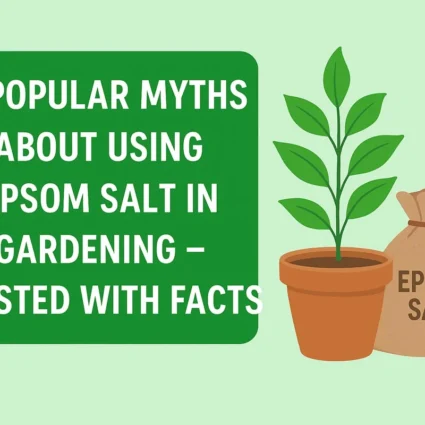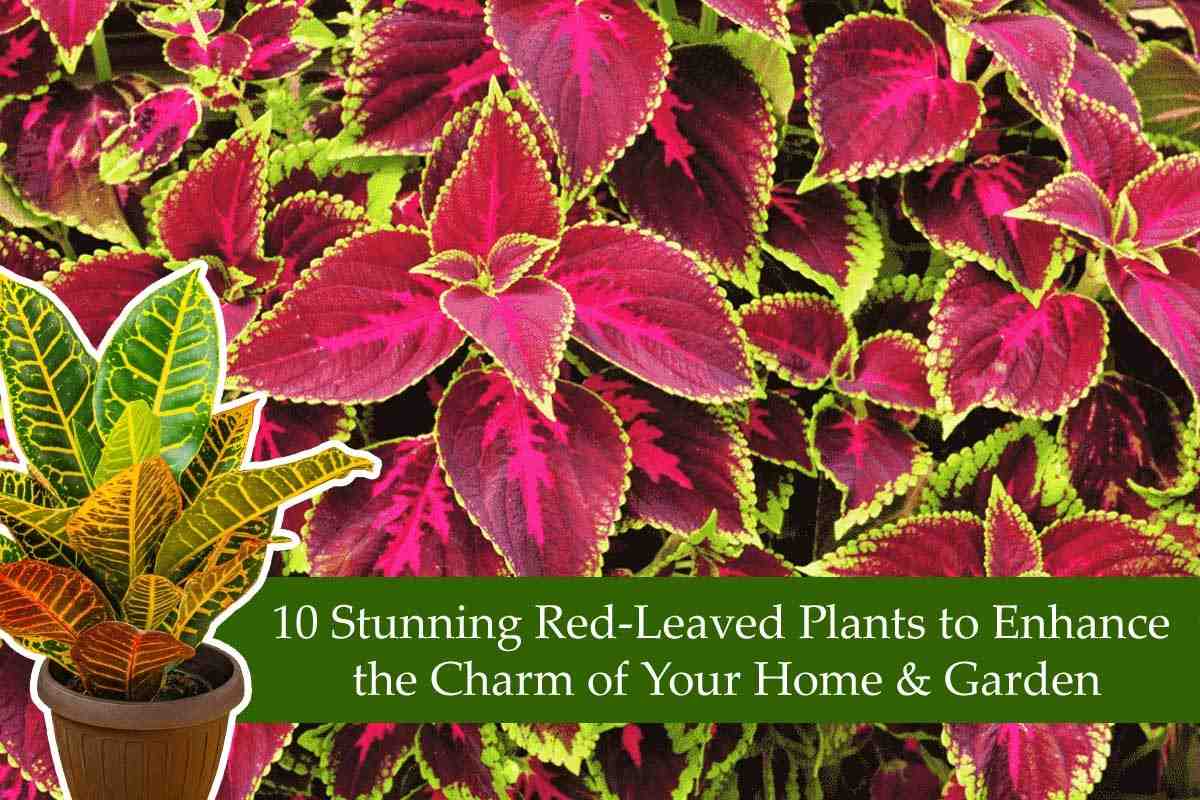
10 Stunning Red-Leaved Plants to Enhance the Charm of Your Home & Garden
Plants are not only about greenery—sometimes, a splash of red foliage can make your home or garden look bold, elegant, and dramatic. Red-leaved plants stand out in décor, add contrast to your indoor spaces, and bring a vibrant touch to balcony and terrace gardens. From indoor houseplants to outdoor ornamentals, here’s a list of 10 red-leaved beauties you can grow to enhance the charm of your home.
1. Coleus (Solenostemon scutellarioides)
Known as the “painted nettle,” coleus has stunning variegated leaves in shades of red, pink, maroon, and green.
- Best For: Indoor corners, shaded balconies
- Care Tip: Avoid direct harsh sunlight; pinch tips to keep bushy.
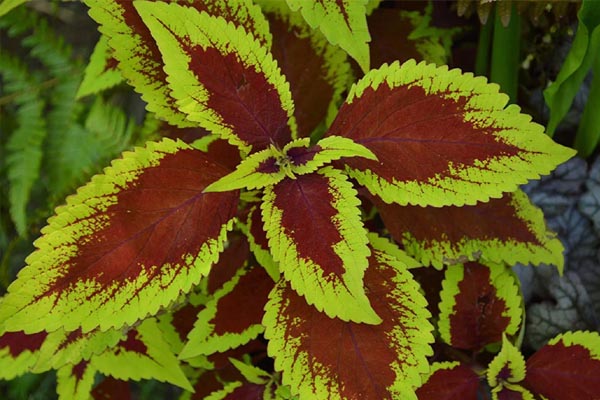
2. Red Aglaonema (Aglaonema ‘Siam Aurora’)
One of the most popular indoor red-leaved plants, Aglaonema adds a bright splash of color.
- Best For: Living rooms, office desks
- Care Tip: Thrives in low to medium light; water moderately.

3. Heuchera (Coral Bells)
A garden favorite with ruffled leaves in shades of ruby, burgundy, and scarlet.
- Best For: Outdoor beds, borders, and containers
- Care Tip: Keep soil moist; grows well in partial shade.

4. Croton (Codiaeum variegatum)
Known for its bold multicolored foliage—red, orange, yellow, and green splashes.
- Best For: Balconies and bright indoor corners
- Care Tip: Loves humidity and bright indirect light.
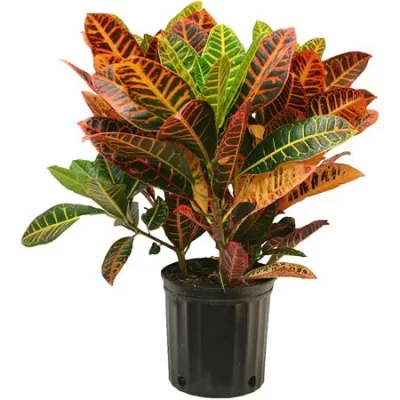
Also Read This :Cultivars vs. Varieties: What Every Gardener Should Know About the Difference
5. Ti Plant (Cordyline fruticosa ‘Red Sister’)
This tropical plant has long, sword-shaped red to pink leaves.
- Best For: Entrance decoration, balconies, or patios
- Care Tip: Keep soil evenly moist; mist leaves in dry climates.
6. Red Maple (Acer rubrum)
A stunning tree with brilliant red leaves, especially in autumn.
- Best For: Large gardens and landscapes
- Care Tip: Needs full sun and slightly acidic soil.

Also Read This :Epsom Salt in Gardening: 10 Myths Every Gardener Should Stop Believing
7. Photinia (Photinia × fraseri ‘Red Robin’)
A hedge plant with glossy red young leaves that mature to green.
- Best For: Garden hedges, borders
- Care Tip: Prune regularly to encourage new red foliage.

8. Poinsettia (Euphorbia pulcherrima)
Famous as a Christmas plant, its bright red bracts add festive charm.
- Best For: Indoor seasonal décor
- Care Tip: Keep in bright, indirect light; avoid overwatering.

9. Japanese Blood Grass (Imperata cylindrica ‘Red Baron’)
Striking ornamental grass with red-tipped blades.
- Best For: Garden landscapes and container arrangements
- Care Tip: Needs full sun for the deepest red color.
Also Read This :How Does Pot Size Affect Plant Growth? A Complete Gardener’s Guide
10. Caladium ‘Red Flash’
Heart-shaped leaves with bright red centers and green edges.
- Best For: Shady gardens, indoor decoration
- Care Tip: Loves humidity and indirect light.
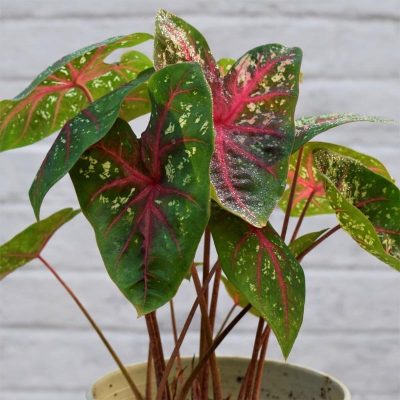
Quick Reference Table: Red-Leaved Plants for Home Charm
| Plant Name | Best Location | Care Tip |
|---|---|---|
| Coleus | Indoor shaded spots | Pinch tips for bushy growth |
| Red Aglaonema | Living room, office | Tolerates low light, moderate watering |
| Heuchera (Coral Bells) | Garden beds, borders | Moist soil, partial shade |
| Croton | Balcony, indoors | Bright light, high humidity |
| Ti Plant | Patios, entrance | Mist leaves, moist soil |
| Red Maple | Large gardens | Full sun, acidic soil |
| Photinia | Hedges, borders | Prune for new red leaves |
| Poinsettia | Indoor seasonal décor | Bright indirect light, avoid overwater |
| Japanese Blood Grass | Garden landscapes | Full sun for rich red color |
| Caladium ‘Red Flash’ | Indoor shade, garden | Indirect light, humid conditions |
Conclusion
Adding red-leaved plants is one of the simplest ways to give your home a striking, elegant makeover. Whether you prefer indoor pots like Aglaonema or outdoor stunners like Red Maple, each of these plants brings vibrancy and charm to your living space. With the right care, they’ll stay bright, healthy, and eye-catching all year long.
Also Read This :How Ancient Plant Tricks Could Help Farming Today
FAQ
Q1. Are red-leaved plants suitable for indoor decoration?
Yes, many red-leaved plants like Coleus, Ti Plant, and Caladium are excellent for indoor decoration. They add vibrant color and contrast to green surroundings, especially in low-light corners or shaded rooms.
Q2. Do red-leaved plants need more sunlight than green ones?
Most red-leaved plants need bright indirect light to maintain their rich color. Without enough light, the leaves may turn dull or lose their red pigmentation.
Q3. Which red-leaved plants are easiest for beginners?
Coleus, Red Aglaonema, and Caladium are beginner-friendly choices. They are low-maintenance and can thrive both indoors and outdoors with minimal care.
Q4. Can red-leaved plants be grown in small balconies?
Absolutely! Compact varieties like Red Aglaonema, Croton, and Heuchera do well in pots and balcony gardens. They don’t require much space but add instant charm.
Q5. Do red-leaved plants attract pests?
Like any plant, they can sometimes attract pests such as aphids or mealybugs. Regularly check the underside of leaves and wipe them with neem oil solution to prevent infestations.
Q6. Are these plants only ornamental or do they have other benefits?
While primarily ornamental, some red-leaved plants like Croton and Caladium also help purify indoor air. Others, such as Coleus, are used in traditional medicine.
Q7. How often should I water red-leaved plants?
Watering depends on the plant species, but generally, they prefer slightly moist soil. Overwatering can lead to root rot, so ensure good drainage.
Q8. Which red-leaved plant is best for gifting?
The Red Aglaonema is a popular choice for gifting because it is hardy, beautiful, and considered lucky in many cultures.
Q9. Do red-leaved plants change color with seasons?
Yes, some plants like Heuchera and Japanese Maple show seasonal variations in leaf shades, shifting from deep red to orange or burgundy.
Q10. Can I grow red-leaved plants from cuttings?
Yes, several plants like Coleus and Ti Plant can be easily propagated from stem cuttings, making them cost-effective for gardeners.

